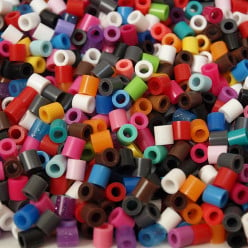Is there anyone who can move a bee nest without killing them. It is huge - it is
Is there anyone who can move a bee nest without killing them. It is huge - it is in the cavity...
of an old stone building - honey is dripping into the room on the ground floor and there are thousands of them????You need a professional beekeeper, he will take the whole hive and move it out to the country somewhere, if he can get to it, if he can't, I don't know what could be done, smoke them out and seal it? As I said, you need a professional.
I'll agree with getting a professional, though smoking them out isn't an option...they cluster around their queen in their hive when they're smoked, so that would just make them more inaccessible. Most beekeepers keep "swarm vacs" (I don't know if that's the proper term, but that's what we always called them) which allows them to safely vacuum up the bees and transplant them into a new hive. This would likely be used for the bulk of the bees, then smoke them in order to make the rest easy to collect and then remove the hive. Since the hive is causing a problem, even if it's inaccessible right now you will have to open it up in some way to remove it, then seal the area that had the hive to prevent re-colonization...alternatively, you could seal it after as many bees are removed as possible and then just put up with the dripping until the honey dries up, but that's definitely a less-desirable course.
Below are 2 important points to keep in mind:-
Step 1 – Make Sure You Aren’t Allergic
Whether or not you have any other allergies, you may be allergic to bee stings. If you are allergic, the venom in a bee sting can cause serious problems such as swelling of the lips or throat, difficulty breathing, tightness of the throat, vomiting, diarrhea and passing out due to low blood pressure. For highly allergic individuals, this can be fatal. If you have experienced an allergic bee sting reaction, then bee hive removal is best left to the professionals.
Step 2 – Protect Yourself
When attempting to perform bee hive removal, it’s important to wear appropriate clothing. Professional bee removers wear light-colored and smooth-textured clothing, and you should too. Bees are aggravated by dark-colors and rough clothing.
Look for a beekeeper’s veil and leather gloves for additional protection of your face and hands. A bee smoker can help calm bees and make them less likely to sting.
Step 3 - Location of the hive changes beehive removal techniques
Bee hives can form in trees and bushes or under eaves of structures; they may appear in variations on the classic form we all know from cartoons. But bees and wasps can also live underground and in walls. In these locations (especially within walls), bee control, removal and killing all become more of a challenge. A wall opening shouldn't simply be blocked off, because the bees will only be driven to find an exit inside the building itself, leading to a potentially dangerous situation for anyone in the building.
Beehives in a wall or underground definitely require the assistance of a skilled professional. Bee hive removal from a wall involves that much more skilled labor. Sometimes removal won't be an option; a professional will be able to assess the situation to make that judgment. Even killing becomes more difficult within a wall. If honeybees or wasps are killed within a wall, all of the remains must be removed. Otherwise, residual honey or insect carcasses will attract other pests into the building.
Step 4 - Use an Insecticide Dust
The most common strategy for getting rid of bee hives is using an insecticide dust. Wait until the evening when the bees are slow and lethargic before removing the hive. Then, quickly spray a thick coat of the insecticide dust in the bee hive opening. Don’t be alarmed if bees start swarming out the opening; this is normal. Just make sure to keep your distance from the bee hive.
Leave the bee hive alone for a day and repeat the process to ensure all of the bees are eliminated.
Step 5 - Remove the Bee Hive
Once you’re certain the bee hive is empty, you’ll want to ensure more bees don’t move in. Put on protective gloves and destroy the bee hive. If the hive is located in your siding, contact a professional to repair the area. Carpenter bees commonly inhabit rotting wood areas on the home. The only way to prevent re-infestation is to repair any vulnerable areas.
You’ll also want to thoroughly wash the hive’s previous site. That’s because bees can often smell the hive and may come back and build again in the same location.
Related Discussions
- 5
How can we deter deer from our yard--without killing them or building a fence?
by Jill Spencer 13 years ago
How can we deter deer from our yard--without killing them or building a fence?
- 2
Hi Ben, did you ever build yr own bee-hive? How did it work out? Is there a Hub
by Les Trois Chenes 14 years ago
Hi Ben, did you ever build yr own bee-hive? How did it work out? Is there a Hub in it? Do send link.
- 41
What are your thoughts on Transgender and the U.S. Military?
by Eric Dierker 8 years ago
What are your thoughts on Transgender and the U.S. Military?I just cannot settle on a right or wrong here. It seems that morally both sides can be argued. Medical conditions are perfectly OK to exclude some people from some vocations. I wonder if there is a real rational basis for this exclusion....
- 22
Why is it that with terrorism going on, people are so apt to point out the "crue
by LoliHey 9 years ago
Why is it that with terrorism going on, people are so apt to point out the "cruelty" of Christians?ISIS is a real threat. But people tend to downplay this, by trying to prove that Christians are worse. People love to play the "Hitler was a Christian" card. Anyone can...
- 21
Is it okay to kill your child if God tells you to?
by KatieCohen 13 years ago
Is it okay to kill your child if God tells you to?I don't think so but I want honest opinions from people who are religious. I am an atheist.
- 3
Will Lindsey Graham Move To Canada If Trump Wins?
by PhoenixV 9 years ago
Will Lindsey Graham Move To Canada If Trump Wins?









